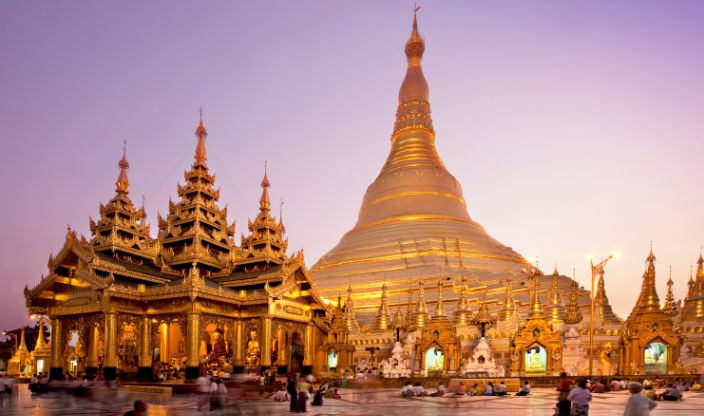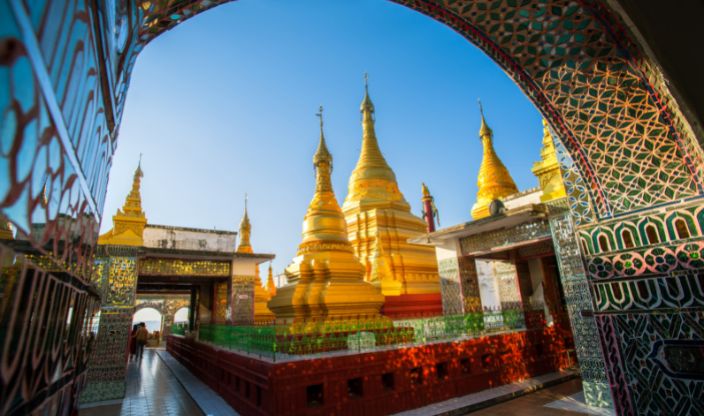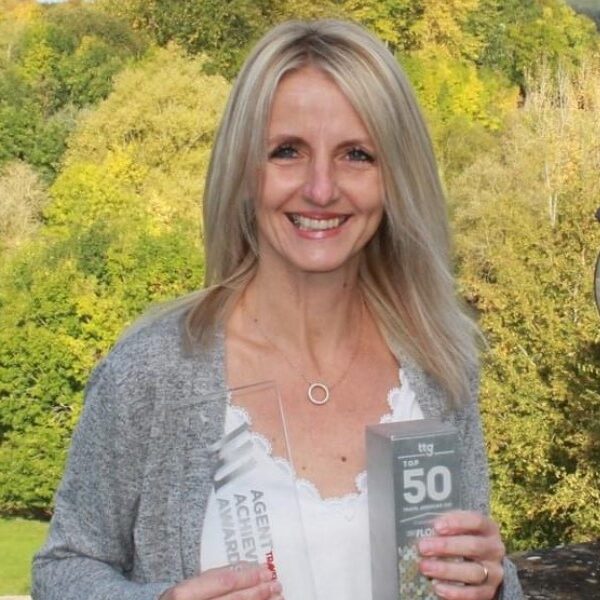Introducing Myanmar
Myanmar, mysterious, exotic and enveloped with cultural splendour, has emerged as Southeast Asia’s crown gem.
Visiting Myanmar is a magical experience since it is laid-back, unspoiled, and full of kind, unpretentious people. When names like Yangon and Mandalay still rustle up visions of distant, adventure-filled nations, this is one of the few, exceptional spots where you can easily leave technology behind you. Here, you may thoroughly immerse yourself in cultural treasures, enjoy the little things, and learn about a civilization that is very different from the one we are used to.
Southeast Asian country, Myanmar, also known as Burma, is bordered by Bangladesh and India on the west, Laos and Thailand to the east and south-east, the Andaman Sea to the south, and China to the north and north-east.
The dry season, between October and May, is the ideal time to explore Myanmar. Travel is varied and gratifying because the entire nation is accessible, the monuments charm, and the beaches are uncrowded.
The beaches on Ngapali close from June to September, and the rains hydrate the lowlands in Mandalay and Bagan.
Noodles, fish, and rice are combined in unusual ways in Burmese cuisine, which is then spiced and complemented with salads and sauces. A significant component of this cuisine also includes fruits, which are a product of the tropical climate. Ingredients and flavours from Myanmar’s neighbours, Thailand, India, and China, have inspired the cuisine also. During your travel do sample:
Nan Gyi Thoke referred to as Mandalay Mont Di, is a wholesome, warm salad made with fat rice noodles, chicken or beef curry, chilli oil, roasted chickpea powder, coriander, and sliced shallots.
Shan and Burmese tofu are both prepared from split peas rather than the more common soybean, and Burmese tofu is created from chickpeas. The national dish of Myanmar however is mohinga. This filling, herb-based soup with lemongrass, rice noodles, and occasionally crispy banana tree pith is typically enjoyed at breakfast. It is served with fishcakes, sliced soft-boiled duck eggs, and crunchy split-pea fritters. Roasted chilli flakes and chopped coriander leaves are sprinkled on top for a divine aroma and taste.
Archaeological discoveries show that regions of Myanmar were occupied around 5,000 years ago. From the first century A.D. to the tenth century A.D., the Pyus and the Mons, who are the progenitors of today’s Myanmarese, founded several kingdoms across the nation. Since those early days, Myanmar has been home to 135 unique nationalities.
More than 20 years before the Norman Conquest of England in 1066, King Anawrahta united Myanmar in the early 11th century and established the First Myanmar Empire in Bagan (i.e. 1044 A.D.).
King Bayinnaung established the Second Myanmar Empire in the middle of the 16th century (1551-1581). The last Myanmar Dynasty was established by King Alaungpaya in 1752, and the British entered Myanmar at the height of this Empire. Myanmar also became a British colony, but it took three Anglo-Myanmar Wars—in 1825, 1852, and 1885—for that to happen.
From 1942 until the arrival of the Allied Forces in 1945, the Japanese controlled Myanmar during the Second World War. After more than 100 years under British colonialism, Myanmar became a sovereign independent state on 4 January 1948.
Yangon: As the main entry point to Myanmar, Yangon is frequently a wonderful place to begin for all travellers, especially families with youngsters may take their time getting to know the locals and their culture. The world-famous Shwedagon pagoda is worth a trip for the entire family to learn about its lengthy history, opulent construction, and to let the children pour water over the Buddha figurine for good fortune.
Bagan: Bagan would introduce your children to a fascinating world of archaeology and science that has revealed a great deal about the once-powerful Bagan kingdom. Bagan has more than 2000 spire-topped pagodas and temples spread across vast plains that date from the 9th to the 13th centuries waiting to be explored.
Ngapali Beach: Perfect for relaxing and spending quality time with the family, there are many water sports activities, crystal-clear waters and lots of restaurants to sample local and international cuisine.
Recommended Myanmar Specialists
Top Locations in Myanmar















